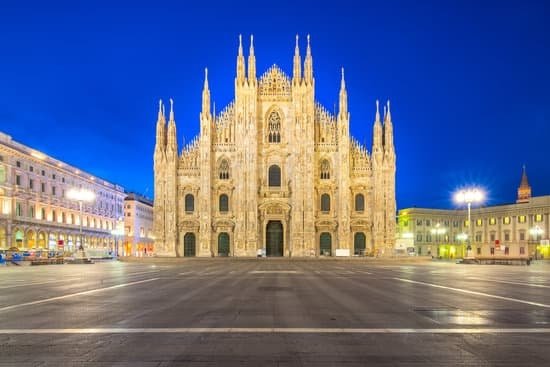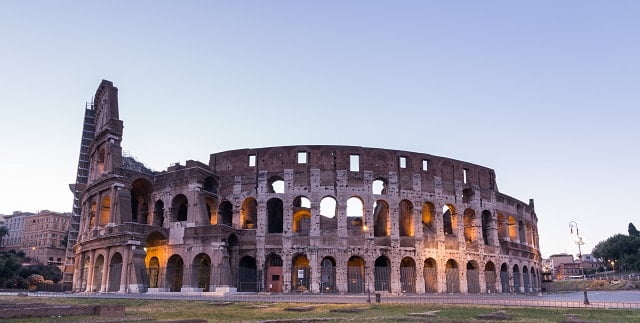When to travel to Rome Italy is a question that many travelers ask themselves when planning their trip to this iconic destination. Known for its rich history, breathtaking architecture, and delicious cuisine, Rome is a city that captures the hearts of visitors from around the world.
In this article, we will explore the best times to visit Rome, taking into account seasonal weather patterns, special events and festivals, travel tips, cultural considerations, budgeting and cost, as well as personal recommendations for different types of travelers.
Rome experiences a Mediterranean climate with hot summers and mild winters. Understanding the seasonal weather overview is crucial in deciding when to plan your trip to ensure the most enjoyable experience. High season versus low season will also be discussed, weighing the pros and cons of visiting Rome during peak tourist times versus off-peak periods. Additionally, we will highlight special events and festivals that take place throughout the year in Rome.
Navigating Rome’s busiest and quietest times can be challenging but with insider advice on transportation and accommodation, travelers can make informed decisions on when to visit. We will also explore how local culture and traditions may affect the best time to experience Rome and discuss how travel costs can fluctuate depending on the time of year. Finally, personal recommendations will be provided for solo travelers, couples, and families looking to make the most of their time in Rome.
Seasonal Weather Overview
Rome, Italy is a city steeped in history, art, and culture, making it a popular destination for travelers from around the world. When planning a trip to Rome, it’s crucial to consider the seasonal weather patterns to ensure an enjoyable experience. Here is an overview of the climate you can expect throughout the year:
- Spring (March to May): Springtime in Rome brings mild temperatures, blooming flowers, and longer days. This is considered one of the best times to visit Rome as the weather is pleasant for sightseeing and outdoor activities.
- Summer (June to August): The summer months in Rome bring hot temperatures and crowds of tourists. Many visitors flock to the city during this time to enjoy outdoor concerts, festivals, and al fresco dining. However, be prepared for high humidity and busy attractions when traveling to Rome during the summer.
- Fall (September to November): Fall in Rome is characterized by mild temperatures and fewer tourists compared to the summer months. The city’s parks transform into beautiful shades of red and gold as the leaves change, making it a picturesque time to explore Rome.
- Winter (December to February): Winter in Rome brings cool temperatures and occasional rain showers. While some may find the weather unfavorable for outdoor activities, winter offers a more peaceful atmosphere with fewer tourists crowding the city’s main attractions.
When considering when to travel to Rome Italy based on weather preferences, it’s important for travelers to take these seasonal variations into account when planning their trip. Whether you prefer warm summer days or cooler autumn afternoons, understanding Rome’s climate throughout the year will help you choose the best time to visit this captivating city.
High Season vs Low Season
When to travel to Rome, Italy is a crucial decision to make when planning a trip to the Eternal City. Understanding the pros and cons of visiting during high season versus low season can greatly impact your overall experience.
High season in Rome typically falls during the summer months from June to August, as well as around major holidays such as Easter and Christmas. This is when the city experiences its highest influx of tourists, with long lines at popular attractions and higher accommodation prices.
On the other hand, visiting Rome during low season, which usually spans from November to February, offers several advantages. The city is less crowded, allowing for a more intimate exploration of its iconic landmarks such as the Colosseum and Vatican City.
Additionally, accommodation prices tend to be lower during this time, making it more affordable for budget-conscious travelers. However, it’s important to note that some attractions and restaurants may have reduced hours or be closed altogether during the off-peak period.
Another factor to consider when deciding between high season and low season in Rome is the weather. Summer brings hot temperatures and crowds, while winter can be cold and damp. Spring and autumn are often recommended as optimal times to visit due to milder weather and fewer tourists.
Lastly, personal preferences should be taken into account when choosing when to travel to Rome. If you enjoy being in the midst of lively crowds and vibrant events, high season may be ideal for you. On the other hand, if you prefer a quieter atmosphere with more affordable options, then low season is worth considering.
| High Season | Low Season |
|---|---|
| Peak tourist times | Fewer tourists |
| Long lines at attractions | More intimate exploration |
| Higher accommodation prices | Lodging tends to be cheaper |
Special Events and Festivals
When planning a trip to Rome, Italy, it’s important to consider the special events and festivals that take place throughout the year. These events not only provide unique cultural experiences but also impact the overall atmosphere and crowds in the city. From religious celebrations to historical reenactments, Rome offers a diverse range of events that can enhance your travel experience.
Religious Festivals
One of the most significant religious events in Rome is Easter, particularly the week leading up to Easter Sunday. The city comes alive with processions, religious services, and special events such as the Pope’s Mass at St. Peter’s Square. For those interested in experiencing the rich traditions of Catholicism, visiting Rome during Easter can be an unforgettable experience.
Cultural Festivals
Rome hosts various cultural festivals throughout the year, showcasing music, arts, and food. One notable event is the Festa di San Giovanni on June 24th, which celebrates the patron saint of Rome with fireworks, parades, and concerts. Additionally, the Roma Jazz Festival in November attracts music enthusiasts from around the world with its lineup of international jazz artists.
Historical Reenactments
History buffs may want to time their visit to coincide with historical reenactments such as the anniversary of Rome’s founding on April 21st or the celebrations for Natale di Roma (Rome’s birthday) on April 21st. During these events, visitors can witness costumed parades, gladiator battles, and other activities that bring ancient Rome to life.
By considering these annual events and celebrations when planning your trip to Rome Italy, you can ensure that you have a truly immersive and memorable experience during your visit. Each festival offers its own unique insights into Roman culture and traditions while adding an extra layer of excitement to your travels.
Travel Tips
When planning a trip to Rome, it’s important to consider the busiest and quietest times to visit, as well as the best ways to navigate the city during these periods. Whether you prefer bustling tourist attractions or a more tranquil experience, understanding the transportation and accommodation options can greatly enhance your visit.
Here are some insider tips for navigating Rome’s busiest and quietest times:
- Transportation: The best way to get around Rome is by utilizing the public transportation system, which includes buses, trams, and the metro. During peak tourist season, these modes of transport can be quite crowded, so it’s important to plan your routes in advance and consider purchasing a travel pass for convenience. Alternatively, renting a bicycle or walking allows for a more intimate exploration of the city during quieter times.
- Accommodation: When it comes to finding accommodation in Rome, it’s essential to book well in advance if you plan to visit during high season. This ensures that you have access to a variety of options and can secure the best rates. For those visiting during off-peak periods, you may have more flexibility in choosing accommodations and could even find discounted rates at hotels and bed-and-breakfasts.
- Navigating busy attractions: To make visiting popular landmarks more manageable during peak tourist times, consider purchasing skip-the-line tickets or booking guided tours in advance. This can help minimize wait times and provide valuable insights from knowledgeable guides.
Ultimately, understanding how to navigate Rome’s busiest and quietest times is essential for making the most of your trip. By carefully considering transportation options and planning accommodation in advance, visitors can ensure a smooth and enjoyable experience when traveling to Rome Italy.
Cultural Considerations
Rome, Italy is a city rich in culture and traditions, and understanding these aspects can greatly impact the best time to visit. One important cultural consideration is the religious holidays that are widely celebrated in Rome, particularly Easter and Christmas.
These holidays bring a surge of local festivities and traditions, but they also attract large crowds of tourists, making it both an exciting and crowded time to visit. If you’re interested in experiencing the unique religious customs and observances in Rome, then traveling during these holidays may be ideal for you.
Another cultural factor to consider is the Italian tradition of taking a summer vacation. In August, many locals close their businesses and head out of the city to escape the heat.
This can result in certain shops and restaurants being closed during this time, as well as a quieter atmosphere in general. While this may be great for avoiding large crowds, it’s important to note that some attractions or businesses you may want to visit could be closed during this period.
Understanding these cultural nuances can help travelers decide when to travel to Rome Italy based on their specific interests and preferences. Whether you’re drawn to traditional celebrations or prefer a more relaxed atmosphere without the hustle and bustle of tourism, considering these cultural factors will ensure a more rewarding experience in this vibrant city.
| Cultural Factor | Impact on Best Time to Visit |
|---|---|
| Religious Holidays (Easter, Christmas) | Potential for large crowds but opportunity to experience unique traditions |
| Italian Summer Vacation (August) | Many businesses may close, resulting in quieter atmosphere but limited access to certain attractions |
Budgeting and Cost
When considering when to travel to Rome, Italy, one important factor to take into account is the fluctuation of travel costs throughout the year. Understanding the budgeting and cost implications of visiting at different times can help travelers make informed decisions about when to plan their trip to Rome.
High Season Expenses
During the high season, which typically runs from late spring to early fall, Rome experiences an influx of tourists and subsequently higher prices for accommodations, dining, and attractions. As such, travelers should expect to pay a premium for their visit during this time. Additionally, airfare and other transportation costs may also be elevated, making it essential for budget-conscious travelers to plan and book well in advance.
Low Season Savings
On the other hand, visiting Rome during the low season, which generally falls in the winter months, can result in significant cost savings. With fewer tourists around, accommodations are often more affordable and easier to secure without advanced booking. Similarly, prices for dining and activities may be lower during this time as businesses seek to attract customers during quieter periods.
Shoulder Season Considerations
For those looking for a middle ground between high and low season expenses, the shoulder seasons of spring and fall can offer a balance of reasonable prices and relatively pleasant weather. Travelers who prioritize budgeting but still desire favorable conditions might find these transitional periods to be the ideal time to visit Rome.
By analyzing the budgeting and cost implications of each season in Rome, travelers can make an informed decision about when to plan their trip based on their financial considerations. Whether prioritizing savings or willing to invest in a peak experience, understanding how travel costs fluctuate throughout the year is an essential element of planning a trip to this iconic destination.
Personal Recommendations
In conclusion, the best time to travel to Rome, Italy varies depending on the preference and needs of different types of travelers. For solo travelers seeking a more peaceful experience, the off-peak season from November to March is ideal, as it offers fewer crowds and lower accommodation prices.
Couples looking for a romantic getaway may enjoy visiting Rome in the shoulder seasons of spring (April to June) and autumn (September to October), when the weather is pleasant and outdoor attractions are less crowded. Families planning a trip to Rome should consider visiting during the summer months when kids are out of school, allowing them to take advantage of longer daylight hours for sightseeing.
Despite Rome’s popularity among tourists throughout most of the year, understanding peak tourist times versus off-peak periods is important in order to make the most of your visit. By avoiding major events and festivals such as Easter and Christmas, visitors can enjoy shorter lines at popular attractions and a more relaxed atmosphere in cafes and restaurants.
Taking into account budgeting and cost considerations is also crucial when planning a trip to Rome – traveling during low season can significantly reduce expenses on accommodation and transportation.
No matter when one chooses to visit Rome, it’s important to respect local customs and traditions. Being aware of cultural considerations such as religious holidays or traditional festivals can enhance the overall travel experience. With careful planning and considering personal preferences, any traveler can make their trip to Rome an unforgettable one.
Frequently Asked Questions
What Is the Best Month to Go to Rome?
The best month to go to Rome is typically in April or May, and then again in late September to October. During these months, the weather is mild, and there are fewer tourists crowding the city compared to the summer months.
What Is the Rainy Season in Rome Italy?
The rainy season in Rome, Italy usually occurs during the fall months from October to November. However, it’s important to note that even during the rainy season, Rome still experiences plenty of sunny days. It’s always a good idea to check the weather forecast before your trip.
What Is the Best Month to Travel to Italy?
The best month to travel to Italy really depends on what you want to experience. If you prefer milder temperatures and fewer crowds, then April, May, and September are great options.
However, if you want to experience Italy during its many festivals and events, then summer months like June or July might be more suitable for your travel plans. Ultimately, it all comes down to personal preferences and what kind of experience you’re looking for in Italy.

I’m a passionate traveler, writer, and Italophile. My fascination with Italy’s history, art, and culture has led me on countless adventures across the Italian landscape. Through “I Live Italy,” I share my love for this extraordinary country and aims to inspire others to explore its boundless beauty.





